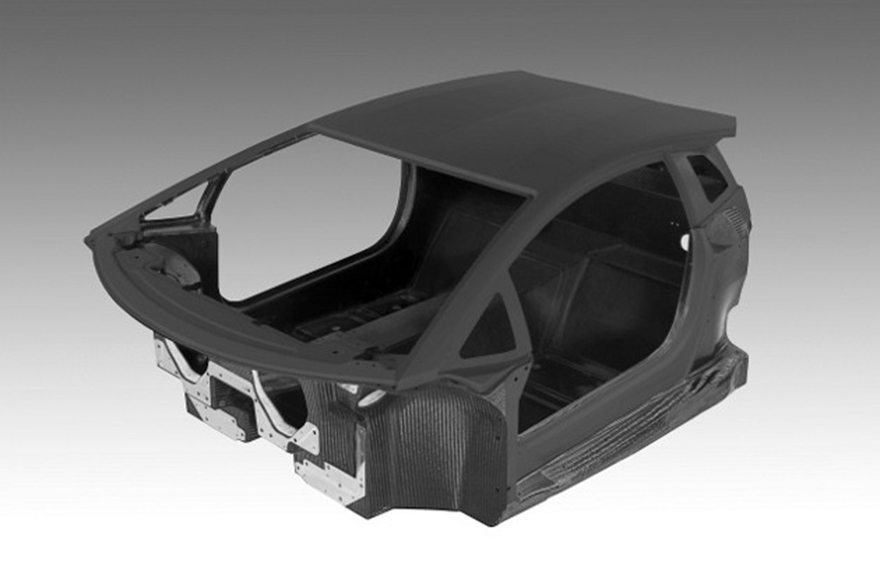Lamborghinis are "Designed to Split in Half" in Event of a Crash? We're Not So Sure

Talk about schadenfreude. Seemingly every car blog in the world, and every local paper in NYC, has picked up the story of a Lamborghini crash last weekend in Brooklyn. The notable part of the crash: The $400,000 Aventador hits a tree and splits in half.
Luckily there were no fatalities in the crash, which occurred Saturday in the Mill Basin neighborhood of Brooklyn. But the part that we can't get over is that every single news organization is reporting, with no attribution whatsoever, that the Lamborghini is specifically designed to split in half in the event of a crash. Uh...what? CBS reported that "the Lamborghini severing in half...is a safety feature meant to help protect people inside the car. That safety feature may be the reason the driver was able to walk away from the crash." The Daily News claimed that "The [crash] shows exactly what manufacturers of the $400,000 ride had in mind by designing it to break apart easily on impact, a safety feature that lessens the energy involved in the wreck."
We're not sure this description is entirely accurate. Perusing websites that rate auto safety features, not a single one of them that lists the Aventador mentions there's a break-in-half design.
Here's what we do know: Although Lamborghini does not participate in factory-sponsored racing to the extent of their competitors, they're not above learning a thing or two from F1; thus the Aventador is designed around a carbon fiber monocoque, like an open-wheel car, encasing the driver in a strong but lightweight cage. Here's what it looks like:

It's simple physics that a chain is only as strong as its weakest link. When this understanding is transposed onto a car, we can see it means that the weakest parts will break first; we saw the wheel come off of an F1 car here, presumably because the suspension struts are weaker than the monocoque, allowing the energy from the impact to shatter them.
What that means to us is that the Aventador's monocoque is simply the most rigid part of the car, and that the strength differential between the monocoque and the rest of the car means the rest of the car is likely to experience catastrophic structural failure before the monocoque. But the thought that Lamborghini designed one half of the car to go careening off into space, and possibly doing damage to cars or people well outside of the crash zone, sounds completely absurd to us.
Any of you car nuts have hard evidence that the car was, in fact, designed to split in half? We're happy to be proven wrong to further everyone's understanding of car design safety features.
-
oFavorite This
-
Q9Comment
K
{Welcome
Create a Core77 Account
Already have an account? Sign In
By creating a Core77 account you confirm that you accept the Terms of Use
K
Reset Password
Please enter your email and we will send an email to reset your password.

Comments
Well...this sort of crash happens often enough that if engine breakaway isn't intentional...well...then something is terribly terribly wrong. And from what I've been able to determine all of these drivers and passengers walked away.
It's also a litlle understandable to me because the heavy parts like the engine have a lot of momentum in high speed crashes, and throwing them away results in a very lightweight cage that is more easy to stop by itself.
Many cars built around the carbon monocoque are designed this way.
Imagine driving that Aventador through an intersection and being clipped by somone on either rear quarter, the engine portion-back would detatch same as it did here when it hit a tree.
The Pagani Huayra is also designed the same way, where there are 7 Magnesium bolts holding the rear portion of the chassis to the Monocoque.
Saw both of these features explained in detail on the "Supercars" show featuring both the Aventador and Huayra.
Some cars have other interesting features like dropping the motor out of the car in order to let the crumple zones 'crumple' effeciently.
Engine is supposed to detach from passenger 'life cell' under certain circumstances so as take the punishment and NOT to transmit enegy to the occupants.
Similar to a classic motorcycle accident.
Learned 40 years ago that when a crashed motorcycle looks VERY good it often means the rider is DEAD. When the bike looks horrible, the rider survives.
Whenever the vehicle ABSORBS the extreme punishment and is essentially destroyed by the kinetic energy, it means that LESS energy is left to hit and destroy the passenger.
THAT is why Carbon Fiber and other composites like modern, advanced fiberglass, tend to work extremely well in occupant life preservation, much better than metal structures.
Looks like it worked in this instance. Airbags deployed and cell is intact = 100% occupant survival.
There is a GOOD REASON why highly advanced high technology costs FAR MORE than common technology.
Better engineers and better material safety standards..
Certificate degrees in automotive repair as well as Custom Fabrication from Washtenaw Community College, Michigan
How its made and How do they do it also have segments on the design of F1 cars.
Anyway, that's what I think, but I bet someone from the industry would have a better idea. I'll see what I can find and get back to you.
Here's an excellent visual of Audi Factory driver Allan McNish's scary wreck at Le Mans in 2011. He was probably traveling 150+mph at the time of the crash and walked away completely unscathed. Despite the scary shower of carbon fiber, wheels, and other race car bits, no one else was injured either. Another wreck in a team car at night (there's no real video of that wreck) saw a car completely destroyed except for the safety cell. That wreck was at close to 220mph and the driver, Mike Rockenfeller, only had a headache afterwards.
http://www.youtube.com/watch?v=JW3NDGk6YQE